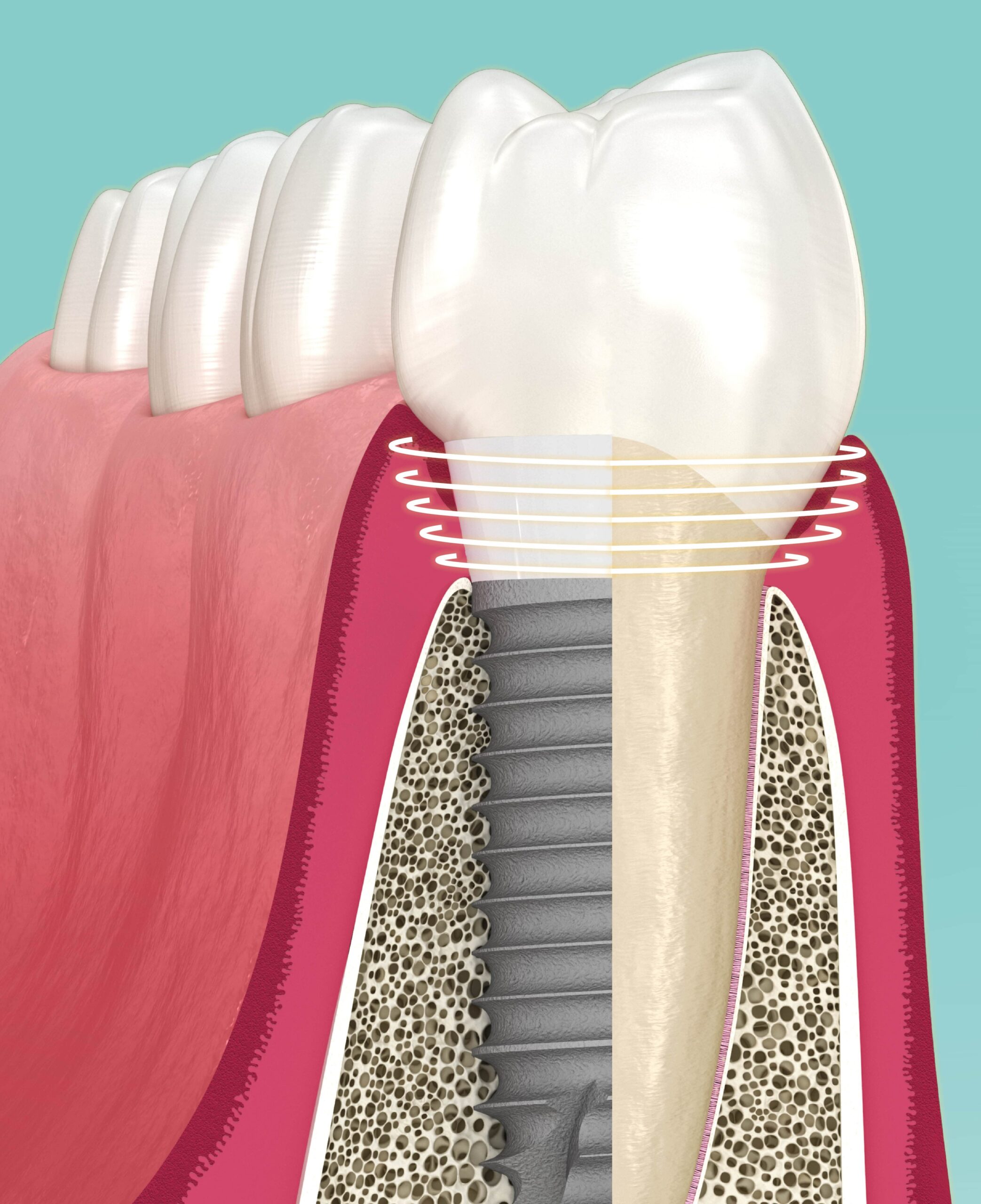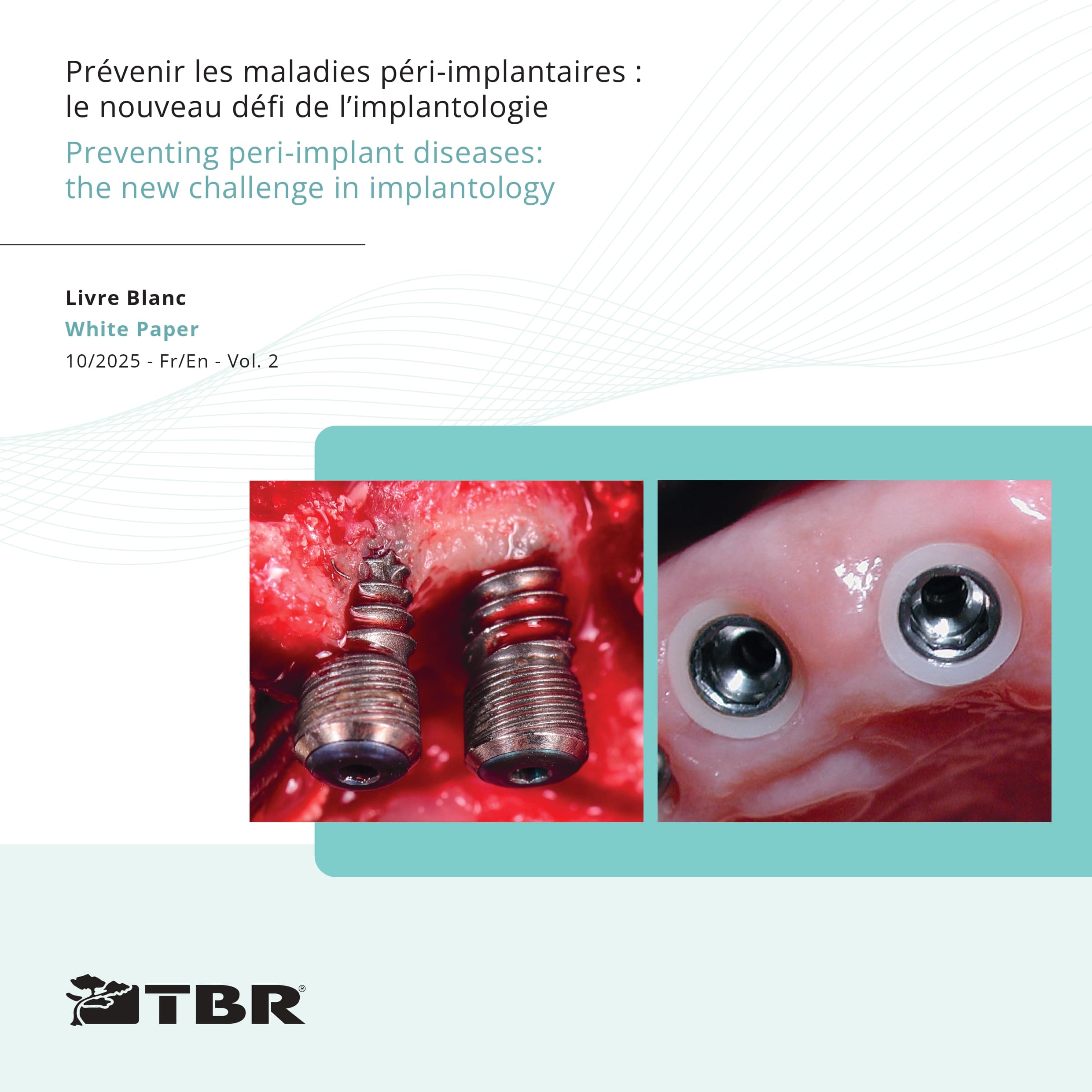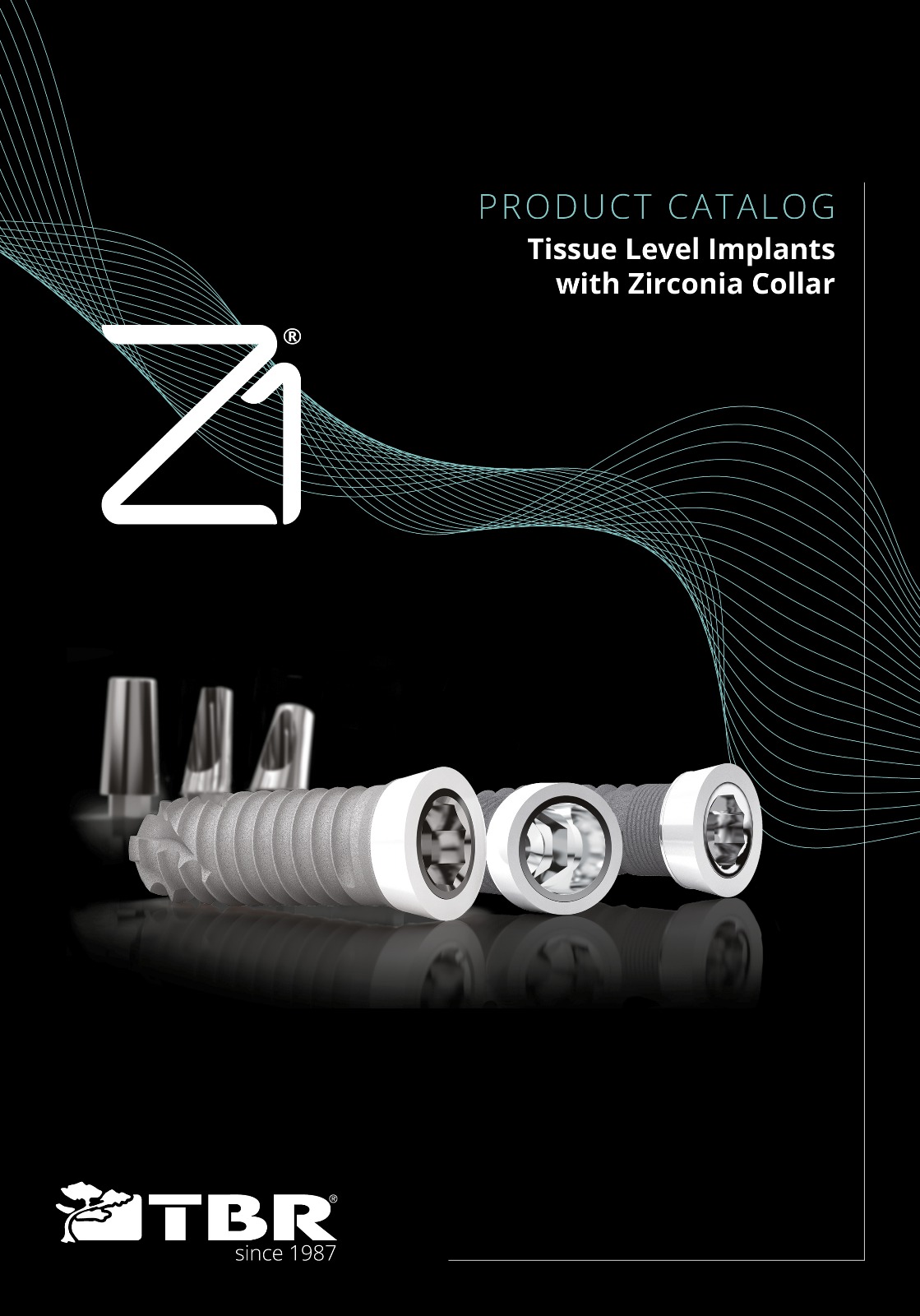

The Z1, Born to Prevent
The long-term stability of implant-supported restorations is closely linked to the preservation of the peri-implant biological width. However, around a conventional implant, the epithelial-connective attachment results primarily from a tissue adaptation process, with collagen fibers lacking true anchorage and a downward invagination of the junctional epithelium, promoting mucositis and, subsequently, peri-implantitis.
The patented Z1 implant, featuring a zirconia transgingival collar, is designed to re-establish a biomimetic soft-tissue architecture.
Zirconia, due to its high biocompatibility and smooth surface state, supports primary soft-tissue healing, the formation of a short junctional epithelium, and the organization of a connective tissue cuff rich in circular fibers, contributing to:
- Limiting epithelial invagination,
- Stabilizing the supra-crestal soft-tissue height,
- Preserving the crestal bone from remodeling-induced resorption,
- Reducing susceptibility to peri-implant inflammatory processes.
The anatomical emergence profile of the zirconia collar, in continuity with the prosthetic restoration, also provides physiological color integration in esthetic areas.
The Z1 therefore introduces a preventive approach to implantology, based on replicating the natural defense mechanisms of soft-tissue attachment.
Zirconia collar height adapted to gingival thickness
The patented zirconia collar of the Z1 implant is available in multiple platform diameters (Ø4.4 / Ø5.0 / Ø6.0 mm) and in two zirconia collar heights (1.5 mm or 2.5 mm) in order to precisely match the gingival thickness of the implant site.

These dimensional adjustments help stabilize the biological width, simplify the prosthetic rehabilitation, and promote a naturally harmonious esthetic integration of the smile.
Clinically proven
15-year in vivo clinical investigation on the safety and performance of Z1 implants.
0,0 % of Z1 implant fractured since 2012
98,8 % of Z1 implants osseointegrated since 2012
Post-Market Surveillance (PMS) data collected since 2012.







